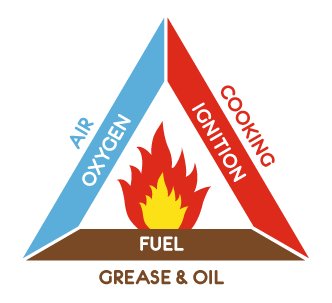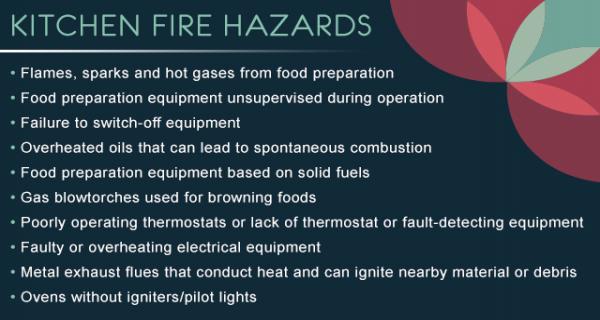When a commercial kitchen exhaust ventilation system becomes implicated in a fire, the risk to people and property escalates significantly, often resulting in serious damage. How to identify the hazards, mitigate the risks and apply a best practice approach is the subject of this two-part series on fire safety and kitchen exhaust systems.
Part 1: Identifying the kitchen fire hazards
Fires are common occurrences in commercial kitchens, with nearly half of these fires caused by the ignition of cooking materials and 90% spreading into into the kitchen hood or ductwork. Once a fire is in the duct it can move quickly, fueled by grease and oil and igniting flammable materials outside the duct.
Such fires can spread rapidly to the rest of the building; they are difficult to locate and extinguish and can re-ignite remotely. Identifying and understanding the elements of a kitchen that represent a fire hazard are crucial first steps in reducing fire risk.
The Fire Triangle
Commercial kitchen hood exhaust systems are highly susceptible to fire because of the combination of three elements in close proximity — fuel, ignition and oxygen. Fire risk analysis and prevention needs to focus on disrupting one or more of these elements.
Fuel + Ignition + Oxygen = Fire
-
- Fuel: As we all know, grease and oil from cooking is drawn into the exhaust system as part of the ventilation process. While properly installed and maintained filters will capture some of this grease, no filter ever captures 100%. It passes through and around the filters, builds up on the internal hood, duct and fan and potentially leaks through the duct seams. The end result is pools of highly flammable fluids and vapours in parts of the ductwork. Solid fuel ovens add another dimension to this fire risk, with volatile gases from the incomplete combustion of wood mixing with water vapour in the exhaust ducts, forming a tar-like substance that sticks to the duct.
-
- Ignition: Most cooking techniques have the potential to ignite warmed grease, including open flame cooking, sparks or soot from wood ovens or charcoal burners. Even some cooking appliances can generate enough heat to be a source of ignition. And, once the grease is ignited, all that’s required to keep it burning is a supply of oxygen.
-
- Air: As the main purpose of kitchen exhaust systems is to create air movement, there is more than enough oxygen in the ductwork to support a large fire. The ducts can also act like a chimney, funneling smoke and air that further ventilates the fire or sends volumes of toxic smoke back into the kitchen via the hood.
The Fire Triangle dramatically illustrates the significant fire risk posed by kitchen exhaust systems. Identifying and reducing the hazards is the first step, some of which are highlighted below.
In Part 2 of this series we’ll look at how you can mitigate your fire risk through a best practice approach to kitchen exhaust system installation, maintenance and cleaning.


